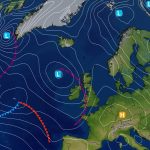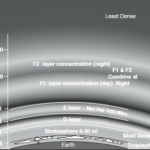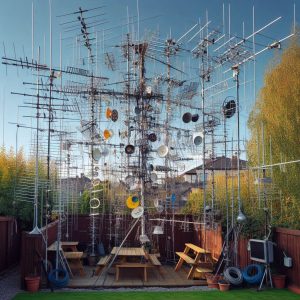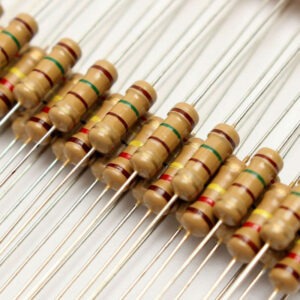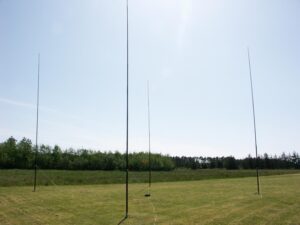Amateur radio offers a vast array of digital and data modes, each with unique capabilities for voice, messaging, image transmission, and more. These modes range from advanced digital voice systems to experimental data communication methods, making ham radio a playground for innovation. Here’s a combined and comprehensive glossary:
Voice and Digital Voice Modes
DMR (Digital Mobile Radio)
- What It Is: A professional-grade digital voice mode widely used in ham radio.
- Key Features:
- Talk Groups: Topic-based group communication.
- TDMA: Two conversations on one frequency.
- Excellent weak-signal performance.
- Use Case: Long-range communication, public service events.
D-STAR (Digital Smart Technologies for Amateur Radio)
- What It Is: The first digital voice mode specifically for hams, developed by JARL.
- Key Features:
- Callsign-based routing.
- Reflectors for group chats.
- Integrated data capabilities.
- Use Case: Global reflector-based QSOs and text messaging.
YSF (Yaesu System Fusion)
- What It Is: Yaesu’s proprietary digital voice system, designed for integration with analog FM.
- Key Features:
- AMS: Automatic Mode Select for seamless analog/digital switching.
- Wires-X for internet-based linking.
- Use Case: Club repeaters, mixed-mode nets.
P25 (Project 25)
- What It Is: A public safety standard also used in ham radio.
- Key Features:
- High voice clarity.
- Interoperability with other digital systems.
- Use Case: Emergency and inter-agency communications.
NXDN
- What It Is: A narrowband commercial mode by Kenwood and Icom, adapted for ham use.
- Key Features:
- Narrow bandwidth (6.25 kHz).
- Digital voice and data support.
- Use Case: Specialty nets and experimentation.
M17
- What It Is: An open-source digital voice mode created by hams for hams.
- Key Features:
- Fully open-source and royalty-free.
- Suitable for modern hardware and SDRs.
- Use Case: Community-driven innovation in digital voice.
Data and Text Modes
RTTY (Radio Teletype)
- What It Is: A legacy mode that sends text using frequency-shift keying (FSK).
- Key Features:
- Simple, robust operation.
- Fixed baud rates (e.g., 45.45).
- Use Case: Contests and casual text messaging.
PSK31 (Phase Shift Keying 31 Baud)
- What It Is: A narrowband mode for keyboard-to-keyboard communication.
- Key Features:
- Extremely narrow bandwidth (~31 Hz).
- Highly efficient in weak-signal conditions.
- Use Case: Low-power operation (QRP) and relaxed QSOs.
FT8 & FT4
- What They Are: Weak-signal modes for short, efficient QSOs.
- Key Features:
- FT8: 15-second cycles; highly sensitive.
- FT4: 7.5-second cycles; faster but slightly less sensitive.
- Use Case: DXing, contesting, and propagation studies.
JS8Call
- What It Is: A conversational mode based on FT8 for extended free-text messaging.
- Key Features:
- Peer-to-peer networking.
- Relays for long-range communication.
- Use Case: Emergency communication, weak-signal chat.
APRS (Automatic Packet Reporting System)
- What It Is: A real-time tactical data mode for position tracking, messaging, and telemetry.
- Key Features:
- GPS integration for location sharing.
- Maps on platforms like APRS.fi.
- Use Case: Event tracking, emergency communication, beacons.
Packet Radio (AX.25 Protocol)
- What It Is: Sends packets of data over radio.
- Key Features:
- Supports digipeating and BBS systems.
- Reliable for text messaging and file transfer.
- Use Case: Peer-to-peer messaging, APRS integration.
Winlink
- What It Is: A global email-over-radio system.
- Key Features:
- Works with modes like PACTOR, VARA, and ARDOP.
- Internet-independent email and attachments.
- Use Case: Emergency operations, maritime services.
Experimental and Niche Modes
Olivia
- What It Is: A robust text mode designed for weak-signal HF communication.
- Key Features:
- Resistant to fading and noise.
- Use Case: Reliable QSOs in poor conditions.
SSTV (Slow-Scan Television)
- What It Is: Transmits images over radio using narrowband channels.
- Key Features:
- Popular formats: Martin, Scottie.
- Shares pictures and visual QSL cards.
- Use Case: Image transmission on HF/VHF.
WSPR (Weak Signal Propagation Reporter)
- What It Is: A beacon mode for studying propagation.
- Key Features:
- Extremely low power (QRP).
- Sends signal reports to a global database.
- Use Case: Propagation studies, experimentation.
Hellschreiber (Feld-Hell)
- What It Is: A quirky text mode where characters are displayed as graphical images.
- Key Features:
- Fun and historic feel.
- Use Case: Nostalgic QSOs, casual chats.
MFSK and Contestia
- What They Are: Digital modes optimized for HF communication.
- Key Features:
- MFSK: Multi-tone, robust against noise.
- Contestia: Faster Olivia variant.
- Use Case: Text communication, casual contests.
Pactor and VARA
- What They Are: Advanced modes for high-speed data transmission.
- Key Features:
- Pactor: ARQ-based for error correction.
- VARA: Software-only, high-speed alternative.
- Use Case: Winlink email and data transfer.
Cross-Mode and Hybrid Systems
Cross-Mode Communication
- What It Is: Bridging digital voice modes (e.g., YSF to DMR).
- Key Features:
- Pi-Star supports cross-mode linking.
- Use Case: Interoperability between digital voice systems.
CW over Digital Systems
- What It Is: Morse Code sent over digital networks.
- Key Features:
- Combines old-school charm with modern tech.
- Use Case: Legacy enthusiasts experimenting with digital networks.
Conclusion
This comprehensive glossary showcases the versatility of amateur radio in the digital and data realms. From global QSOs on DMR to weak-signal experimentation with WSPR, there’s a mode for every interest and skill level. Whether you’re using Pi-Star for digital voice or exploring HF data modes, ham radio has endless opportunities for innovation and fun!
Tell us how can we improve this post?
Hi I am Marcus, MM0ZIF, a licenced Radio Amateur, Doctor of Musicology, amateur weather enthusiast. I over the years have been a Amateur Radio Tutor, Examiner, and a Regional Manager for the Radio Society of Great Britain.
This site is dedicated more towards Amateur Radio and Weather, with an angle on Technology too. I also maintain https://havenswell.com/ which is my other blog which is more aimed at cooking, hobbies and life in general as well as businness and networking.



